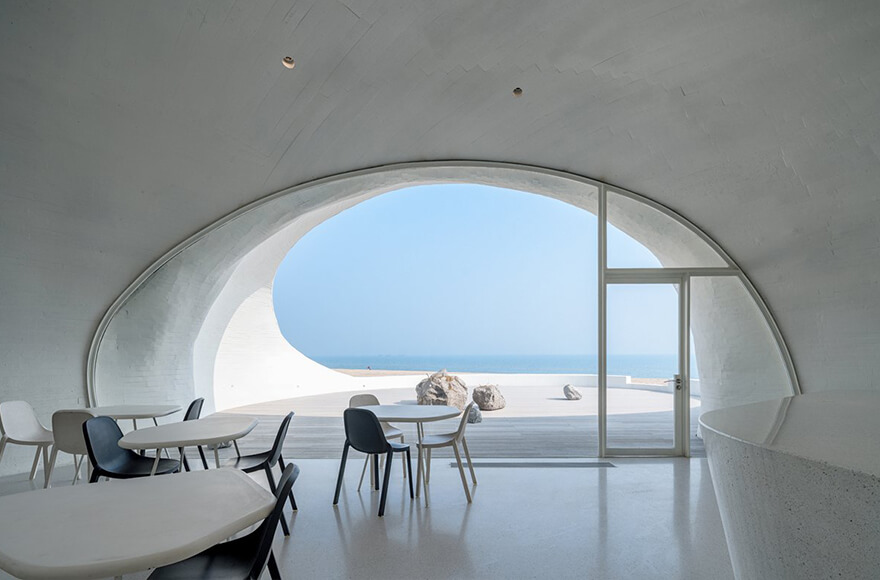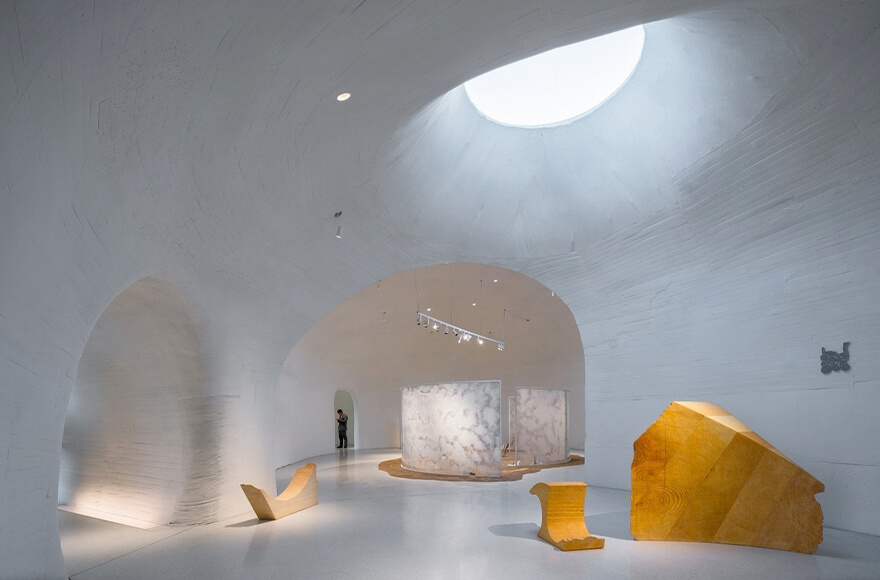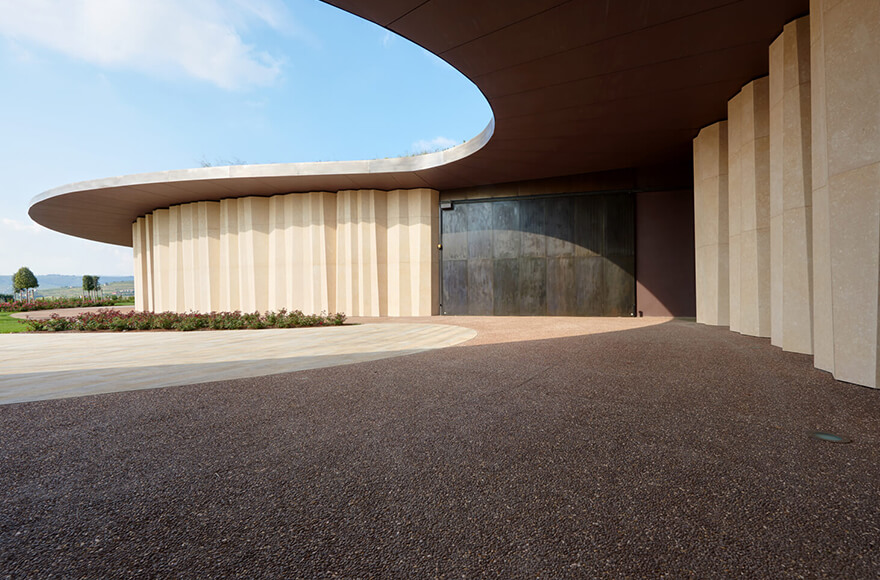Against the creative backdrop of recent post-pandemic years, curves are back into fashion in the field of architecture and design. This new trend has to do with both the structural profile of public and representative buildings, and the interior design field.
The predilection for straight lines — a typical legacy of 20th century modernism — is being softened to accommodate a renewed desire for curvilinear aesthetics, which convey a more enveloping and playful sensation to the gaze.
Several renowned architects are rediscovering the use of arches both for facades and in less exposed areas of buildings, while interior designers are challenging the convention of quadrangular rooms, to introduce curved walls, arched doorways and sinuous furnishings.
In this context, curved furnishings, reminiscent of the 90s and, even before that, of the taste of the 60s, are back in vogue with a renewed shape — a simple and at the same time daring silhouette, naïve, almost cartoonish and with an extremely soft and ergonomic consistency.
This predilection for rounded shapes uncovers a spontaneous and profound search for comfort and hospitality fuelled in part by the pandemic, as well as a renewed appreciation for the futuristic architecture of Frank Gehry and Zaha Hadid and the creative flair of Antoni Gaudí.
More than just a stylistic trend, such an interest for curves constitutes a proper cultural and lifestyle response that transforms architectural spaces into more dynamic, welcoming and reassuring environments. Here are some typical features and examples of the trend, both in architecture and in design.

Curved lines and rounded shapes in architecture: influences, features, instances
One of the main influences behind the return of curves in architecture is the call of nature. After years of design based on clear and geometric lines following a rationalist nature, curves and round shapes offer an alternative, more organic type of architecture — something that has already been conceived and developed by Finnish architect Alvar Aalto, for example in his Villa Mairea (you can learn more about it in our dedicated article). From this perspective, round shapes recall the sinuous beauty of nature, from the waves of the ocean to the profiles of mountain, and establish a profound connection between interior spaces and the environment that surrounds them.
Another perspective envisions curved lines in architecture as means to create bolder and more dynamic spaces, capable of arousing surprise and wonder. It is the case, for example, of Frank Gehry’s Guggenheim Museum in Bilbao and Zaha Hadid’s Heydar Aliyev Centre in Baku, where buildings are turned into original icons. In these buildings, curves add movement and create unexpected visual effects that challenge the rigidity of conventional shapes.
To conclude, we are witnessing a major revival of arches in new architectural projects, as elements capable of giving any space a great sense of value and airiness. The Cadence project by Alison Brooks Architects in London, is an iconic example, where computer-generated Bézier arches enrich the structure of a residential complex. Not only do these arches with variable heights give unique vitality and dynamism to the facade, but they also epitomise a harmonious blend of modern technology and historical references.

Curved lines in interior design: trends and characteristics.
Interior design is evolving through the trend of curved lines, which encompasses not only architecture but also furniture and decor. Sofas and chairs with sinuous shapes make environments welcoming with their unique combination of comfort and attractive design. This style, which British Vogue calls “puffy furniture“, meets a growing need for reassuring spaces in our homes, much in tune with modern lifestyle habits that favour domestic well-being.
Moreover, the increasing demand for curves in interior design feeds on a contemporary nostalgia, perhaps catalysed by the pandemic, according to which rounded shapes represent a source of visual and physical comfort. From this perspective, arches are on the rise in interiors, not only as traditional elements, but also as visual tools capable of smoothing corners and edges, thereby creating distinctive balance and warmth. In this scenario, curves are not just decorative details, but real elements of visual attraction that make interiors vibrant and well-balanced.
